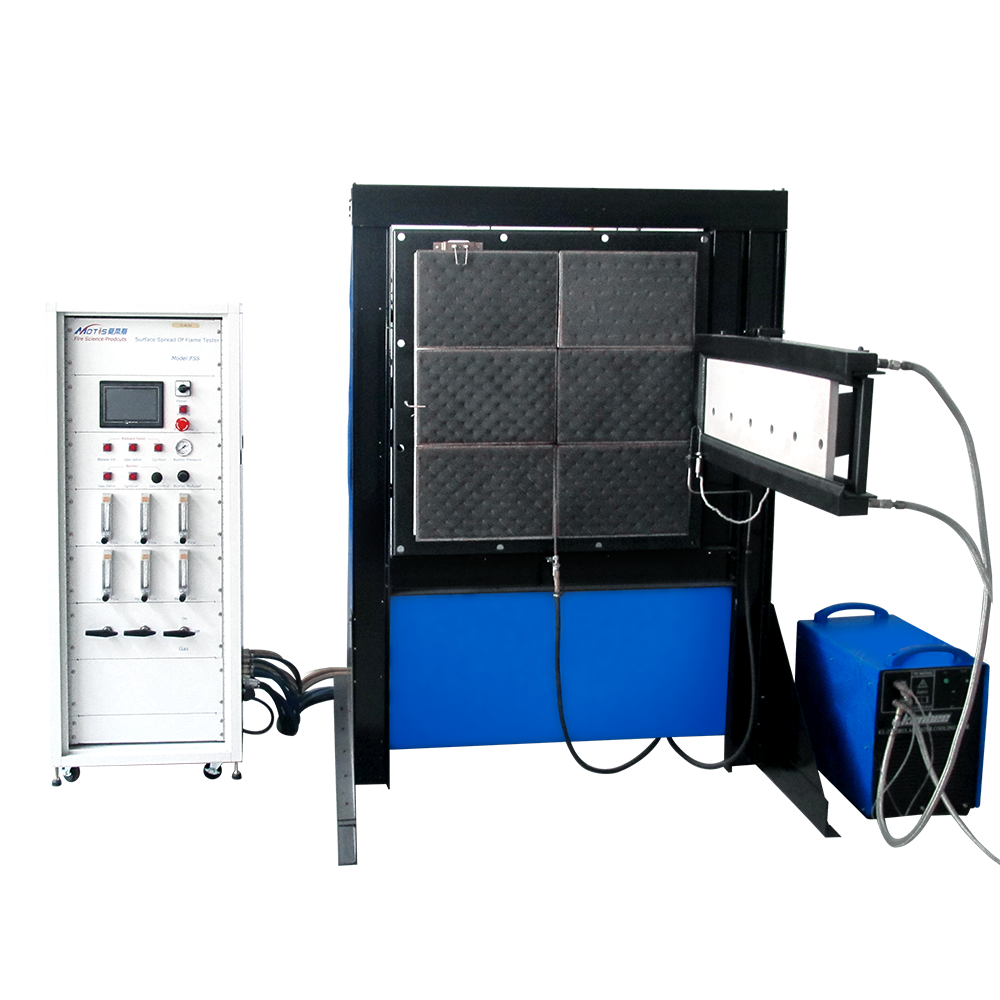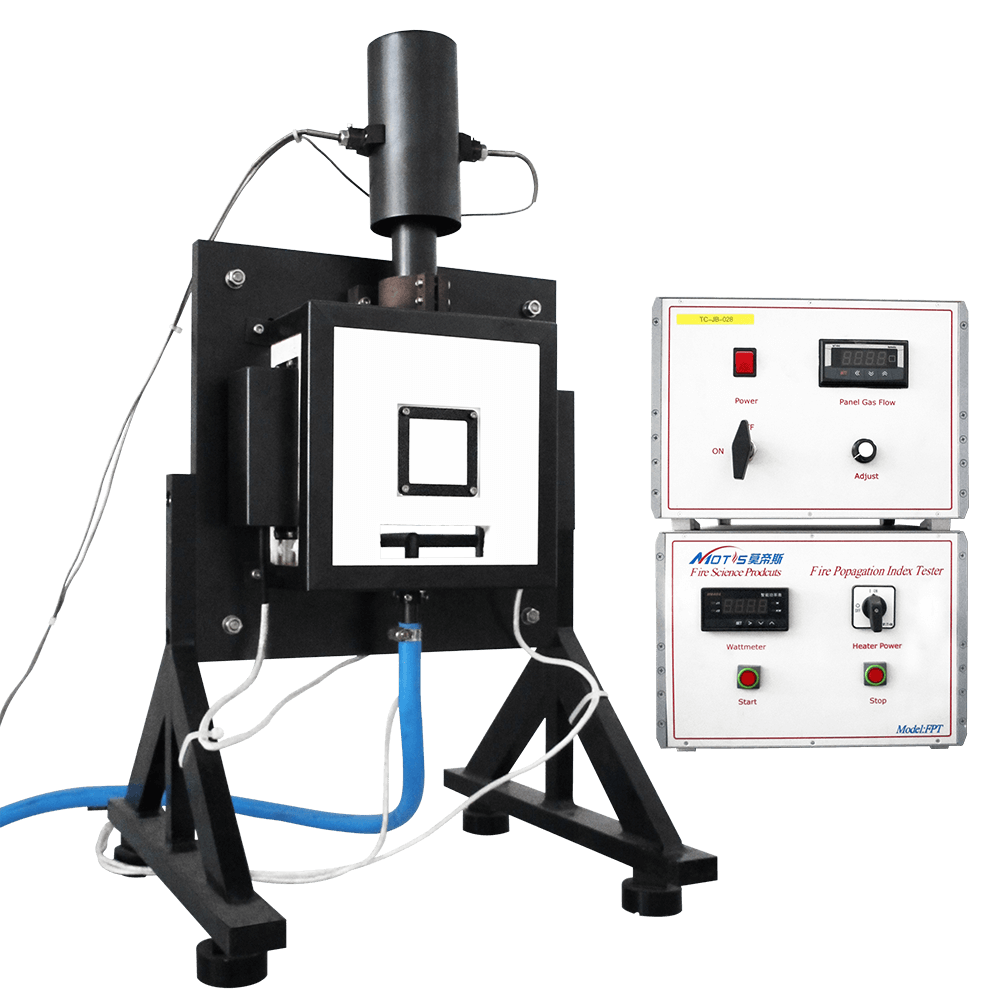BS 476 Part 7 Test in Calibration
Surface Spread of Flame Test Apparatus, in accordance with BS 476 part 7, is used to measure the lateral spread of flame along the surface of a product in the vertical orientation exposed to a particular radiant panel. It provides data for assessing the potential fire hazard of a product in particular conditions, such as the product used in the walls and ceilings.
How to Conduct a BS 476 Part 7 Test?
BS 476 Part 7 Surface Spread of Flame Test carry out as per the following procedure.
a) Ignite the radiation panel, and enable the irradiances specified in BS 476 part 7 to be achieved.
b) Ignite the pilot flame.
c) Take a specimen out from the conditioning atmosphere install it into the specimen holder, and hold the specimen holder in the standby position.
d) Swing the specimen into the test position, and start timing.
e) Extinguish the pilot flame 1 min after the test started.
f) Record the time at which the front of sustained flame spread to the reference line.
g) Record the spread distance of the front of the flame at the time of 1.5min and 10min.
h) Record the behaviour that occurred during the test.
i) Terminate the test when the 825mm reference line is reached, or 10min elapsed.
j) Swing the holder into the standby position, and remove the remains of the specimen or debris.
k) Repeat the test two more times.
BS 476 Part 7 Classification of Spread of Flame
| Classificaiton | Spread of Flame at 1.5min, Limit (mm) |
Spread of Flame at 10min, Limit (mm) |
|---|---|---|
| Class 1 (No Flame Spread) |
165 | 165 |
| Class 2 (Slight Flame Spread) |
215 | 455 |
| Class 3 (Average Flame Spread) |
265 | 710 |
| Class 4 (Hight Flame Spread) |
Exceeds 265mm | Exceeds 710mm |
Surface Spread of Flame Test Apparatus consists of
High-strength steel supports and good welding durable painting ensure no deformation occurs during the high-temperature testing.
Radiant panels in the size of 850mm*850mm, with imported refractory bricks, stacked around the edges and attached with high-temperature cement fixing to ensure that the panels can be used for long periods of time.
The radiant panel consists of 6 separate areas, which can be used at high temperatures, up to 1250°C, with infrared heat radiation without flames on the surface.
Independent gas and air supply of each radiant panel.
Independent spark ignition device for each radiant panel.
Equipped with a high-temperature detection device, which automatically cuts off the gas source if the panel goes out.
Equipped with pressure reducing valve and air pressure gauge to provide a stable gas source and ensure that the air pressure is stable during the test.
A pilot flame burner with a nominal internal diameter of 3.0mm, made of ceramic, which will not deform due to high temperatures.
Stainless steel specimen holder, made of 2mm thick stainless steel welded to resist corrosion at high temperatures.
A water-cooled circular system for the specimen holder, which provides cooling water to the holder to maintain the temperature of the holder, avoiding heat transfer from the holder to the specimen and resulting in test deviation, and preventing the holder from deforming due to long-term exposure to high temperatures.
Schmidt-Boelter heat flux meter, measurement range of 0-50kw/m2, has an accuracy of within 3%, and repeatability within 0.5%.
Water-cooled circular system for the heat flux meter, avoiding damage due to long-term high-temperature use.
A standard calibration board, size 885 by 270mm by 25mm, with a nominal density of 950±100kg/m3, with CNC machining to ensure accurate calibration positions.
Related Fire Test Instrument
BS 476 Part 6




